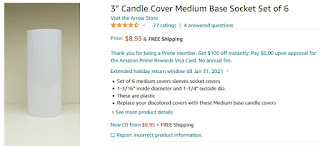Here is a tiny tutorial to round out the year and allow me to get my 12 blogs in for 2020. I got the idea for these owl bookends after seeing these cute owl push pins at Hobby Lobby. I found them in the stationary area but later noticed that they were selling them near the cash register too!
Anyway, here is the last tutorial for 2020!
You will need:
Owl push pins (Hobby Lobby)
Tongue depressors or scrap basswood about 1/16th inch thick
X-acto knife
Sand paper (400 grit)
Acrylic paint
Small pattern paper (such as scrapbook paper)
Glue
Needle nose pliers
- To make two bookends, cut the tongue depressor to about ½ inch wide by about 7/8 inch high (or as needed to be a little taller than your owl)
- Cut off corners as in my photo (or you can keep the rounded end of the tongue depressor if you like that shape).
- Cut two more smaller scraps of basswood and glue together in an “L” shape (about 3/8 by 3/8 inch). This was used as the “base” to glue the owl to (see photos). Sand all pieces.
- Paint the wood pieces with a base coat that will be good under the patterned paper (I chose white). Paint the edges and all sides.
- Cover the flat wood sides with the paper (I didn’t cover the edges, just left those white).
- To remove the pin from the push pin I just wiggled it a few times with needle nose pliers. Some came off easier than others. Glue the “L” wood piece to the shaped back wood piece. Glue the owl to the “L”.
Here is a tip for books: If you have some nice books you want to use in the bookends but you don’t want to ruin them by gluing them together, here is how I made an invisible “holder”. You can use this with or without bookends. I took a small clear plastic box, like the kind Chrysnbon items come in. The narrower end of the box was about the width I needed – it nicely contained about 7 books. The height of the box, without its lid, should be shorter than the books you are putting in it or else it will show.
Cut the box down so it is a little shallower than the books. I used my table saw but you could also use a razor saw (fine blade with many teeth) and miter box. The shiny glare on the bottom of the box is a piece of double-stick tape I used to keep the books stuck down.
To use this holder, just put as many books in it that will fit. Then stick another loose book to the outside of the box to cover up the end of the box (I stuck it there with blue-tack).
The plastic box, if cut small enough, will hold onto the books at the back and not be visible from the front.
 |
| Books seen from the back (plastic box) |
 |
| Seen from front (box is almost invisible) |
Well that's it for 2020! Whew! Now to think...what shall I blog about in 2021? I think I may start the year out following up with some of my readers' suggestions. We'll have to see. Stay tuned for what 2021 will bring!!
















































